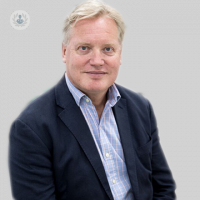Otoplasty: pinning back ears with surgery
Written in association with:The variation in shape between different people’s ears is immense. Indeed, many will notice a different shape between their left and their right ears. Some people may be born without an ear (anotia) or only small parts of an ear (microtia) or where the upper part of the ear is cupped downwards (cryptotia). However, the most common reason people are unhappy about their ears, is if they appear to be sticking out too prominently from their face. As many people can suffer from unpleasant comments about their prominent ears, surgery to correct this is often very life enhancing for patients.

The surgery to correct prominent ears is called otoplasty, or pinnaplasty, and is a safe operation to undergo. Reconstructive otoplasty refers to surgery that creates a missing or partly missing or deformed ear and usually involves the use of grafts from the rib cage.
Prominent ears are quite common. The reason for ear prominence is often a failure to form a fold of the ear cartilage called the anti-helical fold. This is the fold that forms between the bowl part of the ear and the outer rim of the ear. Another reason may be that the bowl part of the ear ‘juts out’ too much from the side of the face. In some people both causes are the reason for their ear prominence.
What are the surgical techniques for ear pinning surgery?
Over the years, a variety of surgical techniques have been described to reshape the ear cartilage and are carried out by a plastic surgeon. Techniques which cut into or remove part of the cartilage of the ear are often successful, but do run a higher risk of complications. In our practice we favour surgical techniques which use sutures (stitches), placed in the cartilage to remodel and rotate it; as we feel that this is less traumatic to the ear, and therefore there is a lower risk of surgical complications. The surgery is carried out from the back of the ear so that the resulting (usually fine) scar is hidden in the natural crease between the back of the ear and the scalp.
How long does otoplasty surgery take?
This surgery can be performed under general or local anesthesia, although in younger children general anesthesia is usually advocated, and usually takes between 60-90 minutes. For some people with more minor degrees of prominence a device called Earfold can be applied to the ear under local anesthesia. This is a quicker procedure but in some patients the device can be slightly visible.
Otoplasty recovery
Although some people may prefer to stay overnight after surgery, most patients are able to go home the same day after otoplasty surgery. There may be some minor discomfort after surgery but it is not usually painful. There may also be some bruising and swelling of the ears which has most often settled within a few weeks.
The results of otoplasty surgery
Otoplasty results are usually life long, especially if the problem has not recurred within the first six months, and is very often life changing for patients. In a small percentage of people the ear prominence can relapse and need repeat surgery.
Some people are unfortunately genetically prone to producing keloid (lumpy) scars and this can be problematic in a very few patients. Wearing a sports head band after surgery is advocated for the first few weeks to stop the sutures loosening if the ear is inadvertently pulled by something or someone.



